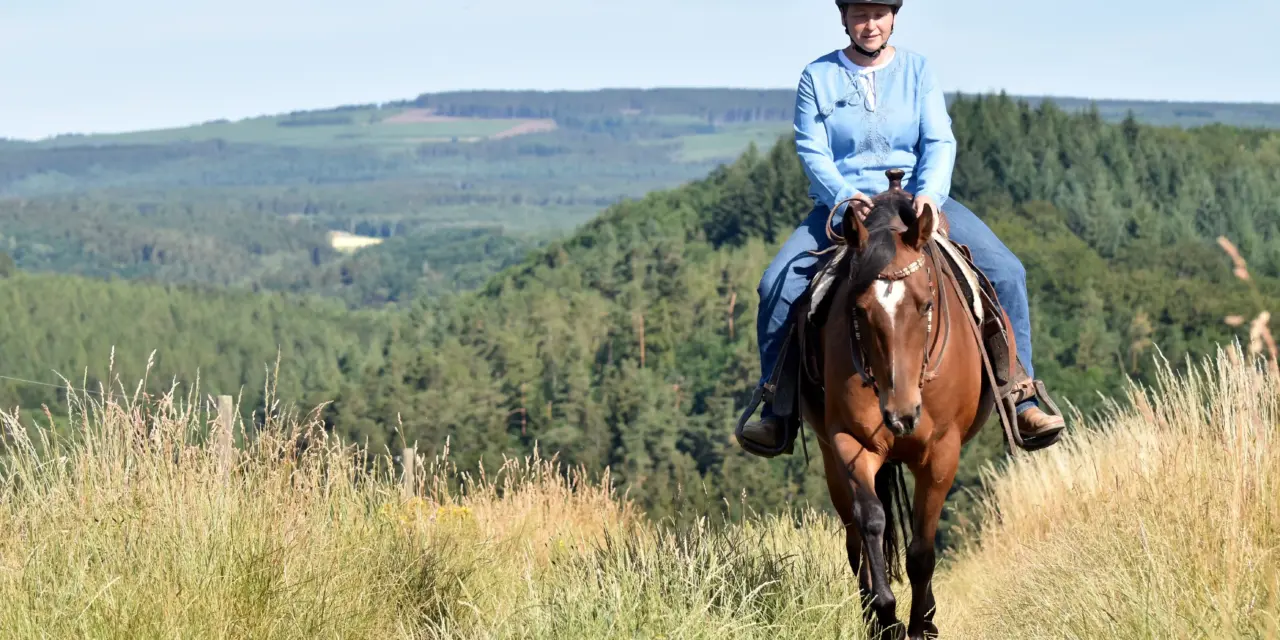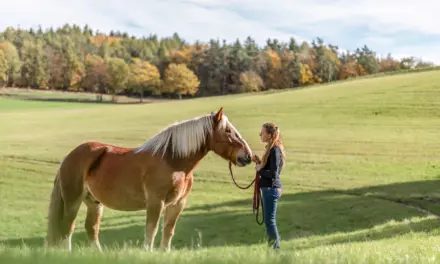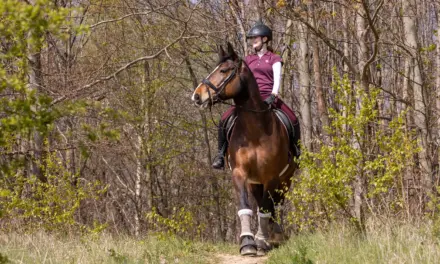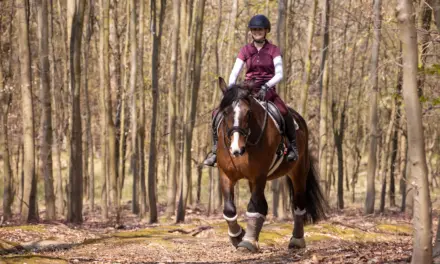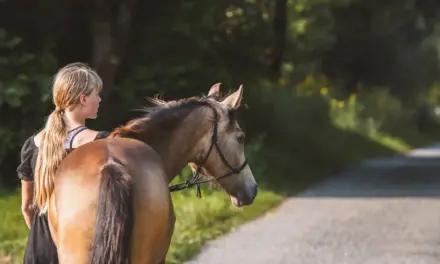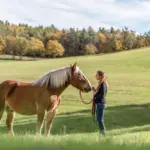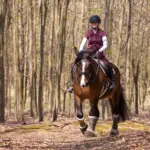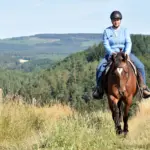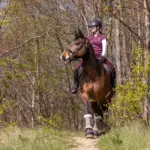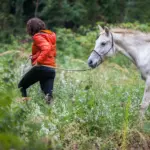How logs, puddles and the like can help turn your horse into a confident all-round athlete
Key Points at a Glance
- Natural obstacles offer free, versatile training to improve balance, confidence, and coordination.
- A gradual approach ensures positive learning experiences.
- Logs, water crossings and uneven ground help develop specific skills in a targeted way.
- This type of training builds lasting trust and communication between horse and rider.
- Safety aspects such as risk of falling and flight responses require careful planning.
- Integrating natural challenges into your hacks makes outdoor training more enjoyable and stimulating.
Why nature makes the best training ground for your horse
Nature offers the most versatile and demanding training environment available to horses. While artificial obstacles in the arena always look the same and provide predictable challenges, the countryside presents ever-changing situations and tasks that keep horse and rider on their toes. Natural obstacles challenge the horse on every level. They develop not only physical skills such as balance and coordination, but also mental resilience, problem-solving ability and trust. A fallen tree is never just a fallen tree – depending on its size, position and surroundings, it presents a variety of demands.
The great advantage lies in the authenticity of these challenges. Out in nature, horses regularly have to step over fallen trees, wade through streams, or navigate uneven terrain. Training with natural obstacles prepares horses optimally for real-life situations and makes them safer partners out on the trail. At the same time, this high-quality training equipment doesn’t cost a penny. Nature provides its obstacles free of charge and constantly renews them: fallen branches after storms, new puddles after rainfall, and ever-changing conditions with the seasons.
A wide range of obstacles for different training goals
The countryside offers a seemingly endless variety of natural training obstacles, each of which targets specific skills. Fallen tree trunks of varying heights are ideal for improving sure-footedness and coordination. Smaller logs can be stepped over, while higher ones require deliberate leg lifting – or, occasionally, a confident little jump.
Water in all its forms – from small puddles to shallow streams – helps to build a horse’s courage and trust. Many horses are initially wary of water, unsure of its depth or what might be lurking in a muddy puddle (perhaps even imaginary crocodiles!). Gently introducing them to different water obstacles helps to reduce this natural caution. Walking through slippery puddles or the gravel bed of a stream also develops their sure-footedness and balance.
Uneven ground – such as small ditches, gentle rises or soft hollows – helps train proprioception and balance. The horse is constantly required to adjust its movement, learning to coordinate its body more consciously as it goes. Natural narrow passages between trees or rocks help train the horse’s sense of space and precise navigation. Horses learn to judge their body size and move deliberately through tight spots – a skill that also proves valuable when loading or in other confined situations.
The key to success: gradual approach
Working with natural obstacles requires a systematic approach that gives the horse time to understand and process each new challenge. A proven method is to always begin by letting the horse explore the obstacle while standing still before asking for movement. Inexperienced horses should first explore obstacles in-hand with a person at their side. The more seasoned ones can begin tackling them under saddle, with a rider on board.
When encountering a new obstacle, the horse should first be given plenty of time to sniff and examine it. This exploration process is crucial for building trust. A horse that has understood an obstacle will approach it with more confidence than one that is being pushed or rushed through it. The next step takes place in slow movement. A tree trunk is stepped over at a calm walk, a puddle is carefully waded through. It’s important to let the horse take the lead and not to rush or pressure it. Horses often find the best solution to a task on their own. Only once the obstacle can be tackled calmly and consistently at a slower pace should the tempo be increased. Even then, safety must remain the top priority. A controlled trot over a low log is far more valuable than a rushed leap over a higher obstacle on slippery ground.
Versatile training effects for body and mind
Training with natural obstacles supports every aspect of a horse’s physical and mental development. Constantly adjusting to different surfaces and obstacles helps improve balance in a consistent and lasting way. Horses develop greater body awareness and learn to maintain stability even in tricky situations. Their confidence grows with every successfully mastered challenge. A horse that has learned unfamiliar objects are usually harmless will be more relaxed in other situations too – for example, when travelling to a clinic at a different yard for the weekend. This growing confidence carries over into the overall riding experience, making the horse a more reliable and trustworthy partner.
Coordination benefits greatly from the ever-changing challenges encountered in natural terrain. The horse constantly needs to adjust its movement, coordinate different gaits, and maintain balance. These complex motor skills are significantly enhanced through varied and consistent training.
The strengthening of trust between horse and human should not be underestimated. When the rider or handler guides the horse safely through challenging situations, the horse’s confidence in their leadership grows. This bond forms the foundation for all further training and development.
Safety comes first
Despite all the benefits, training with natural obstacles also comes with risks that must be minimised through careful planning and preparation. Assessing the risk of falling is the most important aspect. Not every natural obstacle is suitable for every horse.
Slippery or unstable surfaces that could suddenly give way should be avoided, as well as obstacles with sharp edges or hazardous dimensions. A rotten tree trunk can break under the horse’s weight, trapping a hoof and potentially causing panic and serious injury. What looks like a harmless puddle might conceal deep, muddy ground where the horse could sink and struggle to free itself. A fallen tree with branches sticking upwards could injure the horse’s belly if it tries to step over. Safety must always take priority over training benefits!
Flight responses are more common when working with natural obstacles than in the controlled environment of an arena. Unexpected sounds, sudden movements, approaching wild deer or mountain bikers, off-lead dogs, and many other stimuli can trigger panic – because a horse is, and always will be, a flight animal. That’s why it’s essential to always keep an escape route clear and to closely monitor the horse’s focus and body language. In moments of blind panic, more than one horse has bolted and knocked over their handler.
Choosing the right terrain is crucial. Open, familiar areas with stable, secure obstacles provide the best conditions for safe training, especially for beginners. Unfamiliar or hard-to-survey terrain carries higher risks and should only be explored once the horse has gained more experience and has learned to stay calm even in unfamiliar situations.
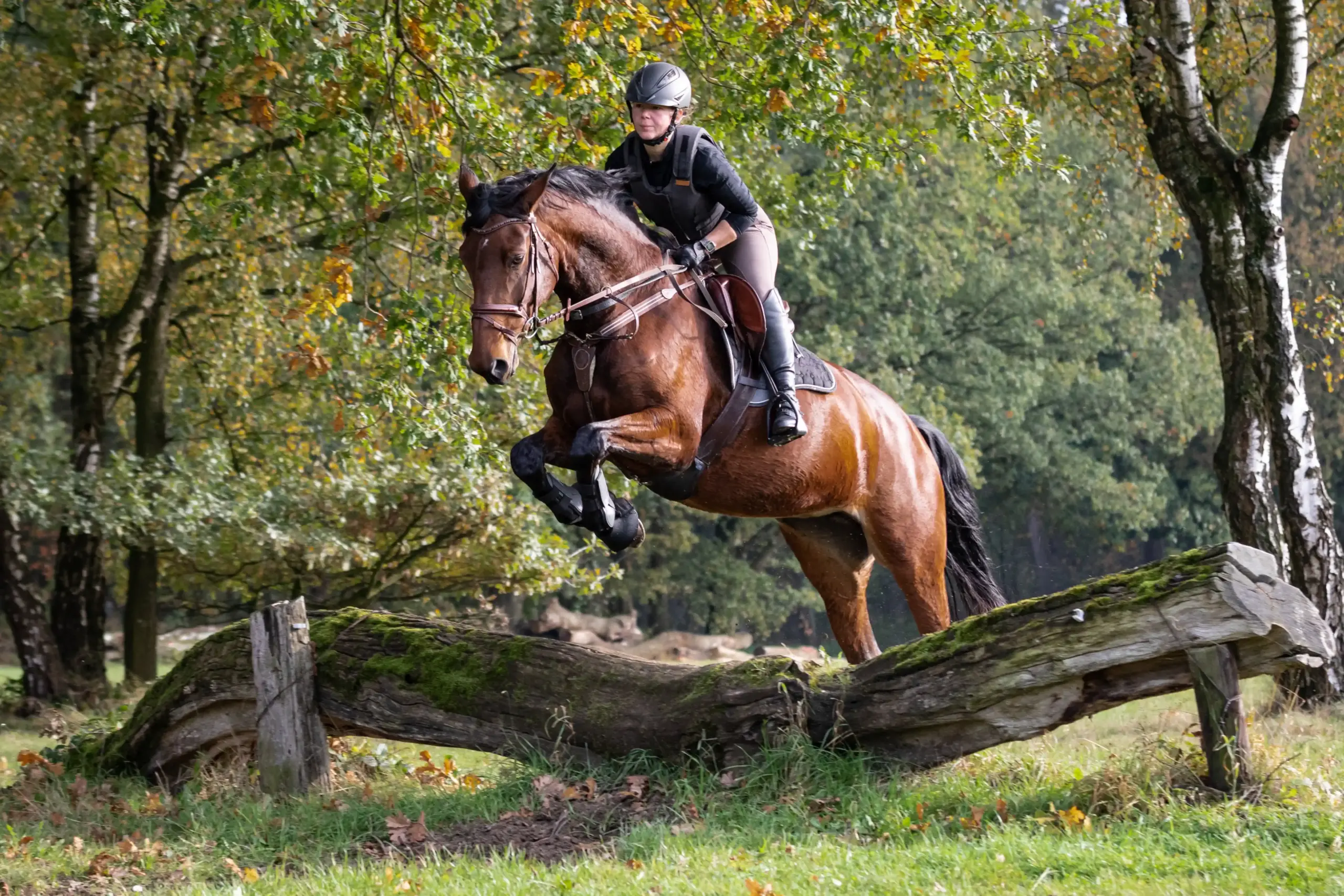
Creative integration into hacking and outdoor work
Natural obstacles can be easily incorporated into a wide range of outdoor training activities. When planning trail routes, you can deliberately choose paths that include interesting natural challenges. This turns a simple hack into a varied and engaging training experience. Combining different obstacles into small “courses” makes the work more motivating for both horse and rider. A route that includes a log, a puddle, and a small hill challenges the horse in multiple ways and keeps it focused. The level of difficulty can easily be adjusted to suit the horse’s current stage of training.
Integrating natural obstacles into regular hacks can significantly enhance the training effect. Instead of simply going for a leisurely ride, riders can purposefully seek out and navigate interesting “obstacle routes.” This active approach makes outings more stimulating and rewarding for both horse and rider. Documenting especially successful training routes is a great way to build a varied and progressive outdoor training programme. Keeping notes on difficulty level, safety considerations, and the training benefits of different obstacles allows for a structured approach to developing your horse’s skills. Nowadays, there are several apps available that not only help with route planning but also allow you to save notes for future hacks.
Training with aha effects for sustainable results
What makes training with natural obstacles so special are the powerful learning experiences it offers. When a horse successfully steps over a log for the first time or bravely wades through a puddle, it creates a true “aha moment” that boosts confidence in a lasting way. These positive experiences leave a deep impression and have an impact far beyond the immediate training situation. A horse that has learned to face and overcome challenges becomes more courageous and cooperative in other areas as well.
The physical benefits of varied training become evident in improved balance, more secure movement, and greater body control. These skills support the horse in all aspects of life – from everyday handling to peak performance in sport. Mentally, successfully overcoming natural obstacles helps develop a more balanced and confident horse – one that is no longer fazed by loading, hacking out, vet visits, or low-key competitions.

